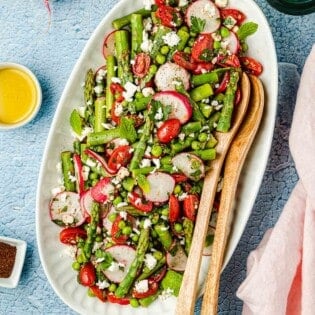
Salads
One pan and 30 minutes is all you need to make this easy and satisfying dinner recipe, complete with pan-seared chicken and asparagus and a rich white wine and lemon sauce!
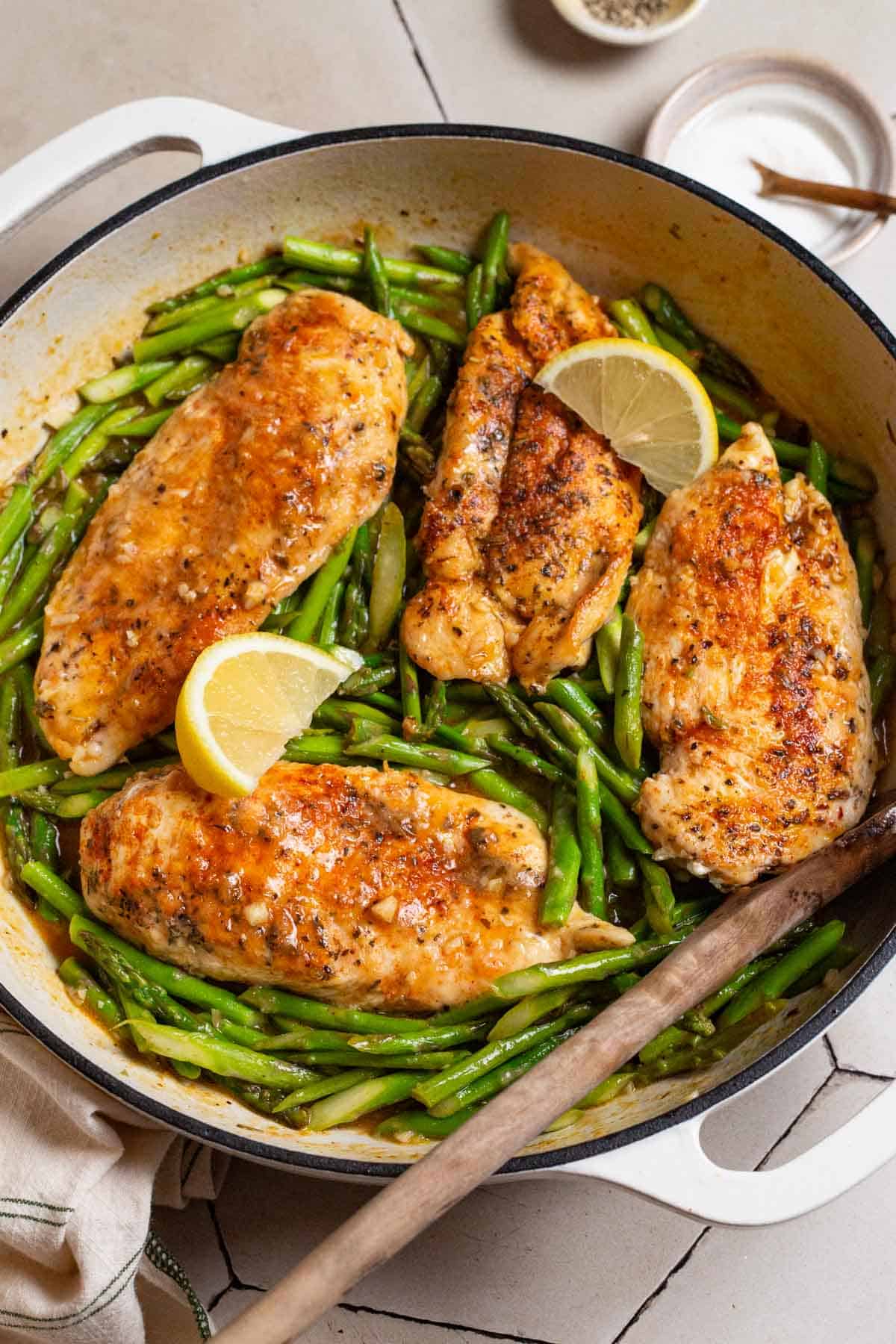
This chicken asparagus recipe is a no-brainer: Chicken breasts, pan-seared until golden and finished in a garlicky white wine sauce until they’re juicy and saturated with flavor. I’m already all-in right there, but what really brings this easy weeknight dinner over the top is the asparagus, with its fresh spring-like flavor lifting the richness of the chicken in all the best ways.
Many “one-pan” meals sound (and are) too good to be true. By the time your chicken is done, your veggies are mushy and sad. But whether I’m roasting carrots or stewing Greek green beans, I simply do not believe in mushy vegetables!
To enhance in the asparagus’ sweetness without losing the satisfying snap, I cut them into large slices on the diagonal so there’s more surface for the hot pan to do its magic. Then I sauté just until they’re lightly caramelized but not overly tender.
The perfectly cooked asparagus gets a quick break while I cook the chicken in the same pan. Then I add the sautéed asparagus back to the pan at the end so there’s absolutely no chance of overcooking.
The result? The chicken is juicy and tender, the asparagus is snappy and sweet, the sauce is rich, savory and delicious. When all is said and done I only have to wash one pan. That’s my idea of a perfect weeknight dinner.
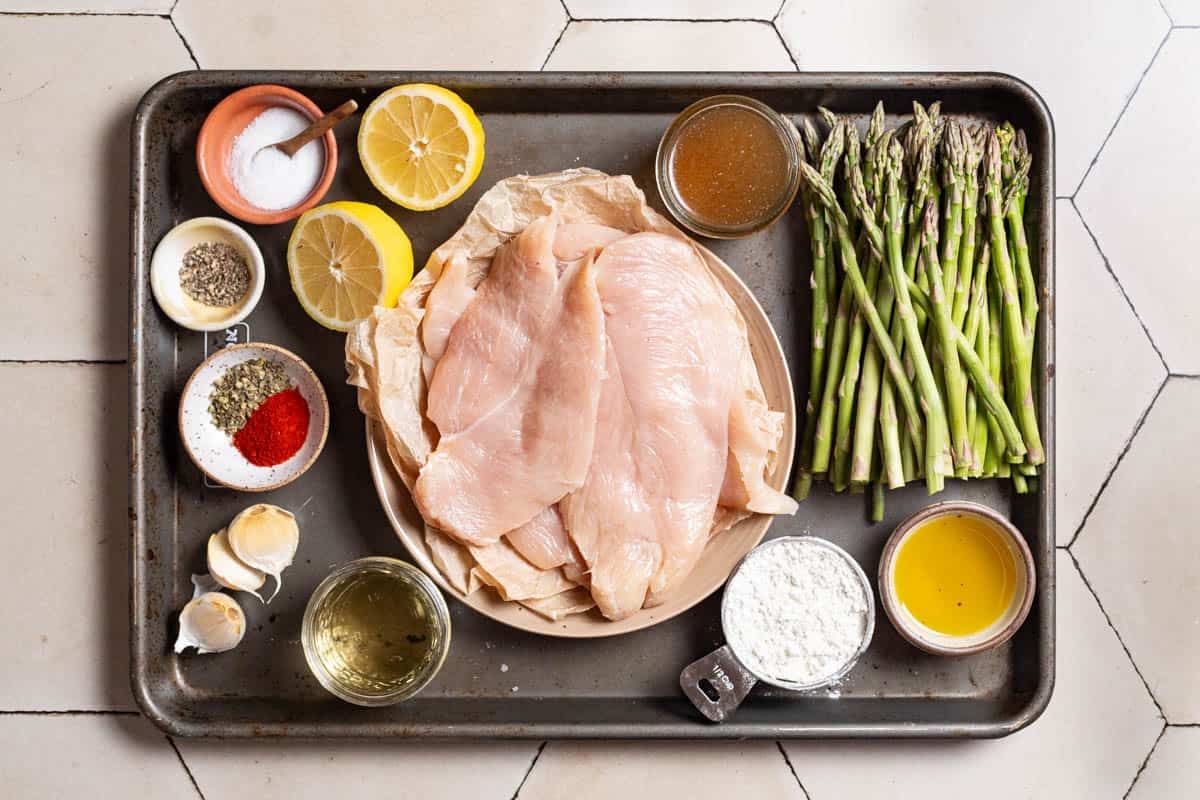
This chicken asparagus recipe leans on tried and true flavor-makers and pantry essentials to develop a rich and satisfying flavor in under 30 minutes! You’ll need:
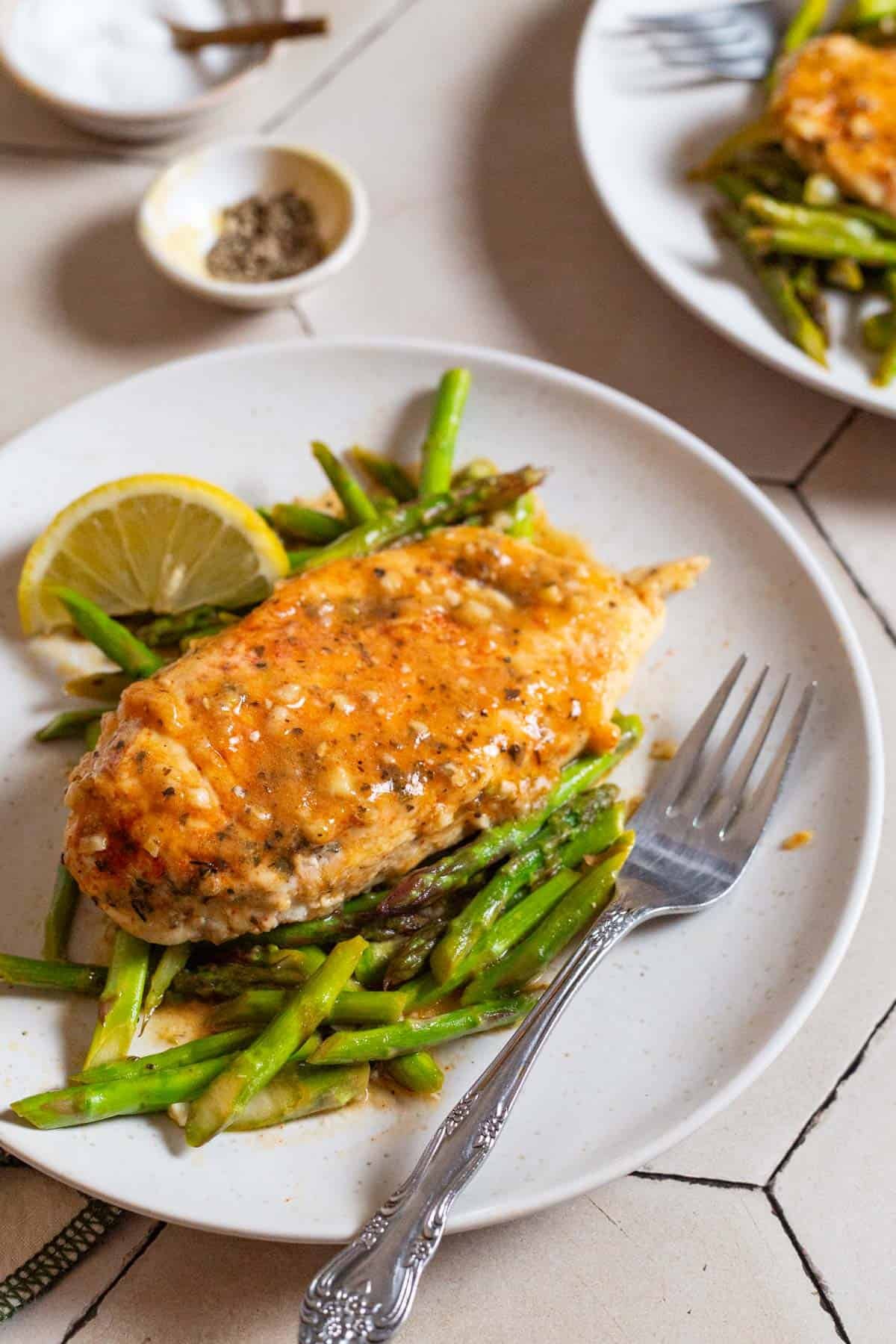
Asparagus is a vitamin and nutrient-rich vegetable with a sweet, grassy flavor. It’s a spring vegetable and you can usually find it in grocery stores starting in March depending up on where you live.
Its absolute peak in terms of flavor is in April/May when it’s extra sweet. But as long as you buy a high-quality bunch that’s nice and fresh, you’ll still have the delicious sweet and grassy flavor and snappy texture. The stalks should be tender but firm. If the ends are woody, just trim them off. The tips should be compact. A floppy asparagus and flowering tips means it’s past its prime!

This one pan chicken couldn’t be easier, with one small “trick” making all the difference: First slice the chicken breasts into cutlets. This not only makes them cook much quicker, but also helps them stay nice and juicy. Here’s how to do it:
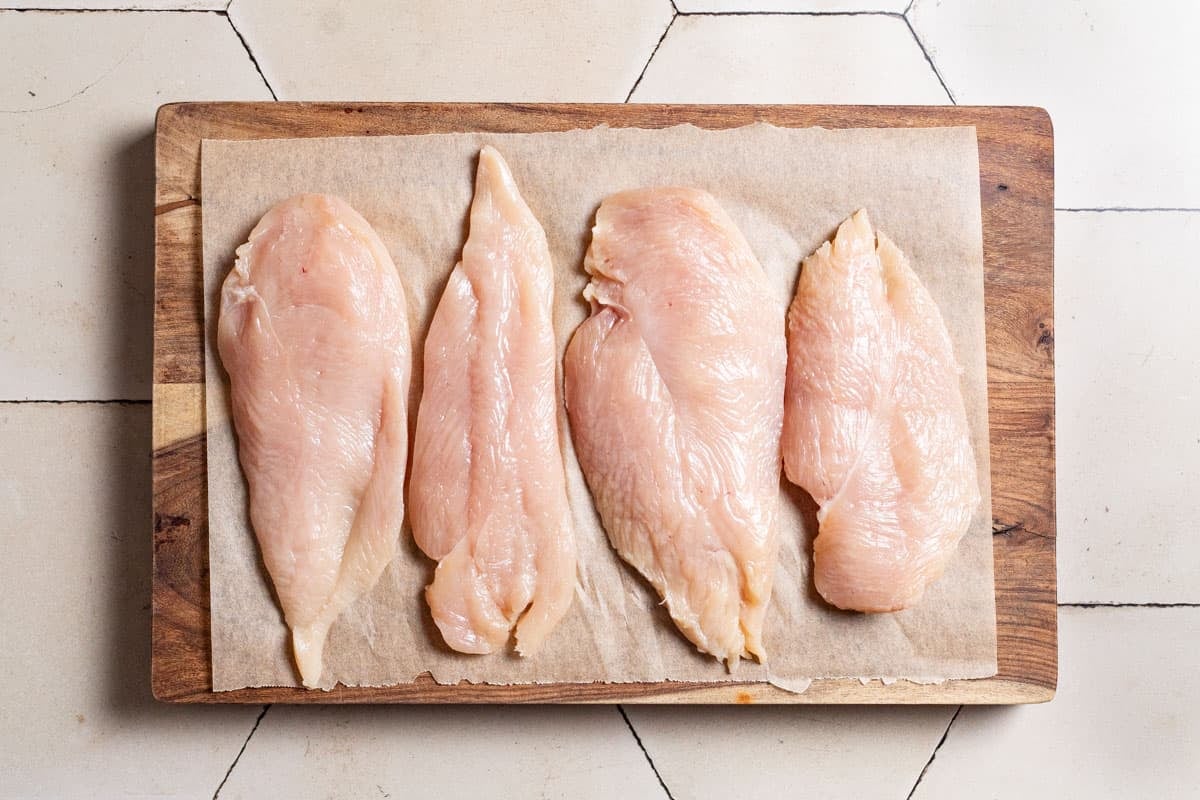
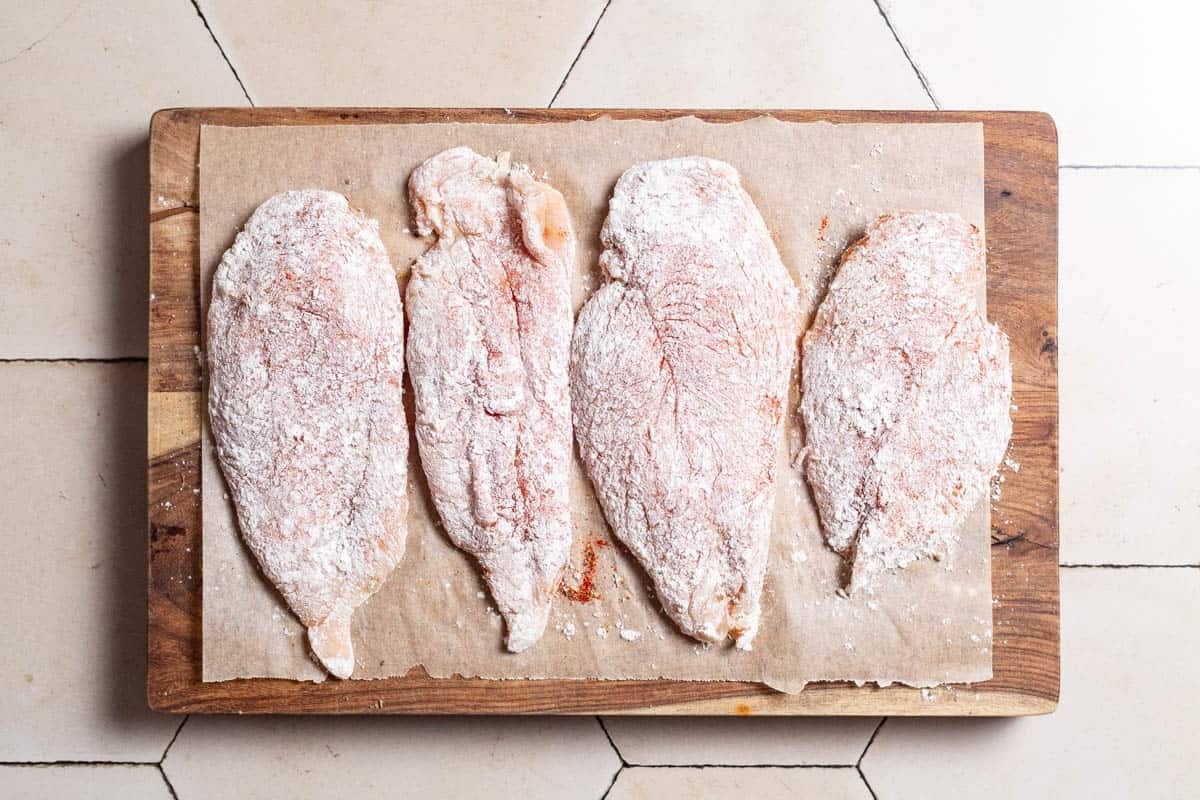
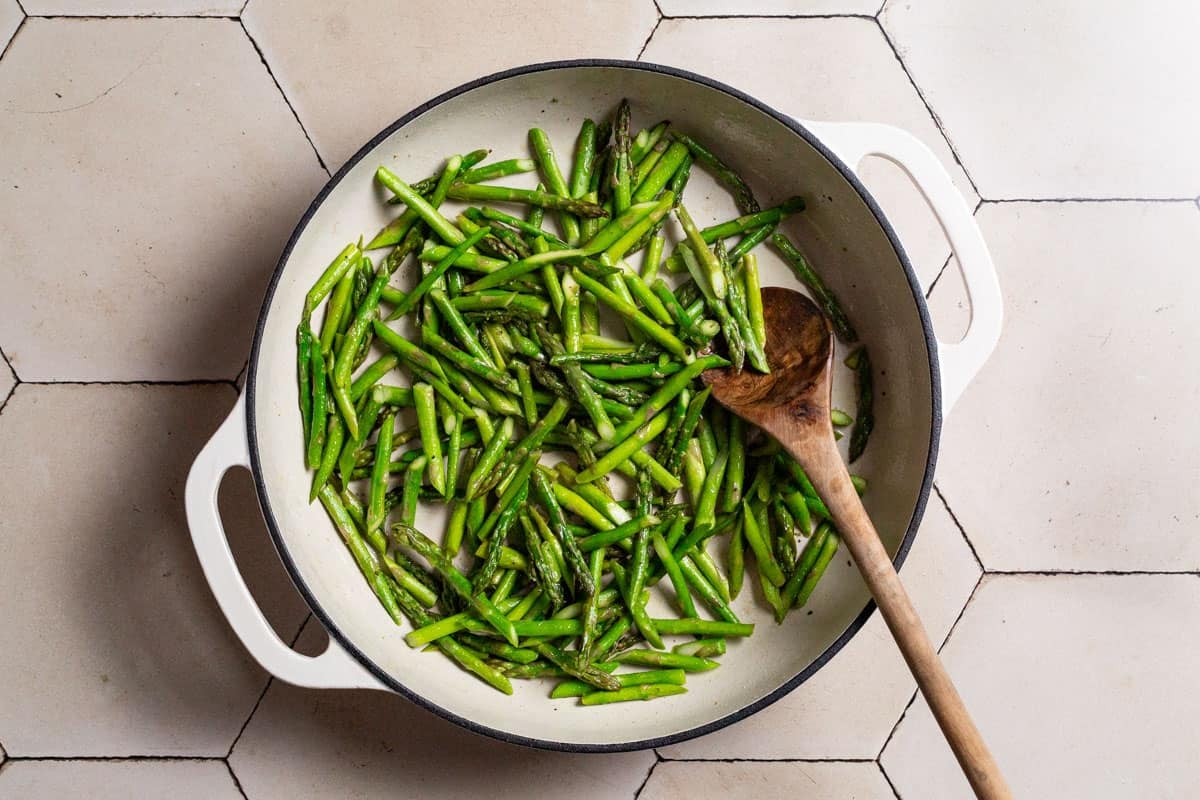
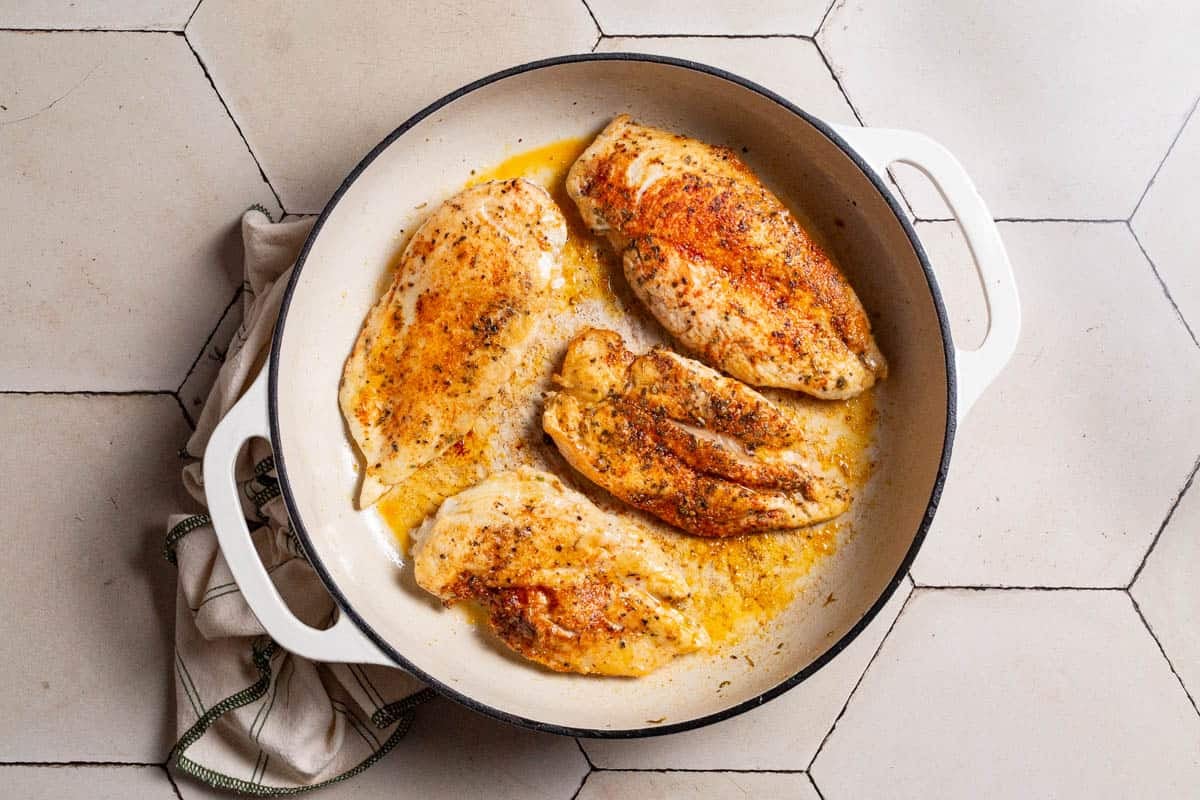
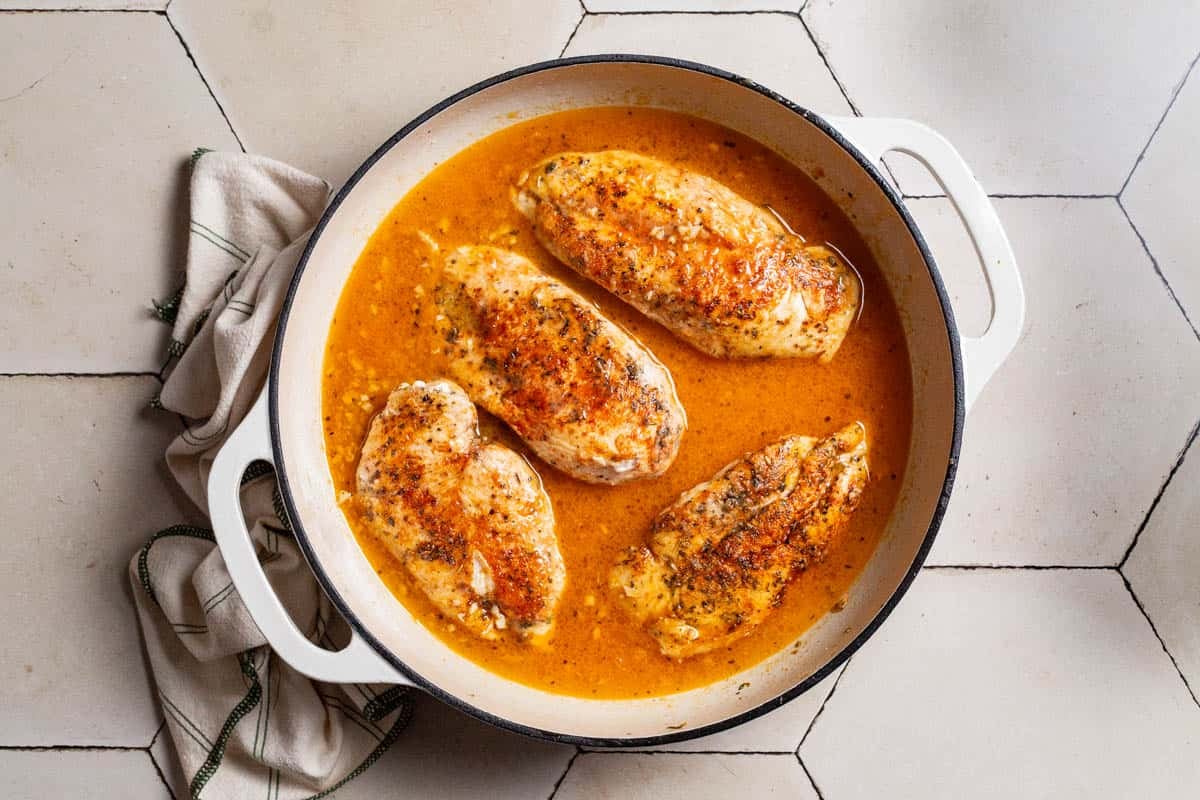
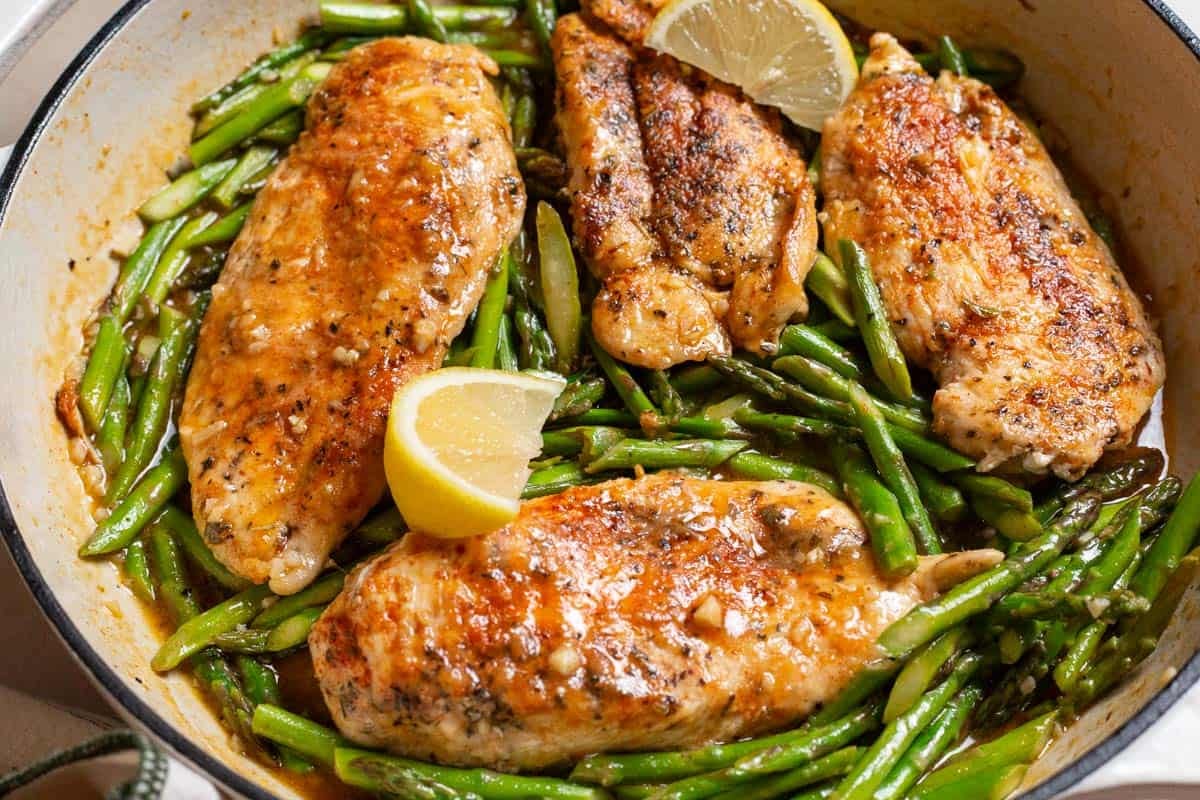
To start, go for something crunchy and lightly bitter or super lemony for balance. Radicchio Salad, Endive Salad or Lemon Parmesan Lettuce Salad all come to mind. Since the chicken cooks quickly, you’ll want to get everything ready before you start cooking, then dress just before serving so the salad stays crisp.
You have the greens all covered with the asparagus, so you don’t need to add any more sides! But I like to serve this chicken asparagus recipe with plenty of pan juices scooped over the top and something to catch any lingering sauce left on the plate, like garlic bread, rice, or focaccia.

Salads

Sides and Small Plates
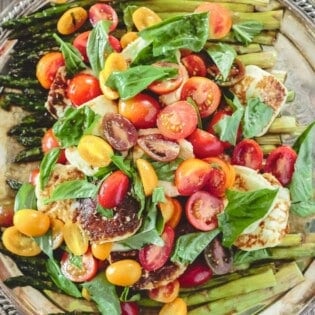
Salads
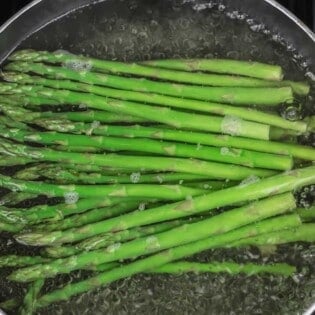
Sides and Small Plates
Browse all Mediterranean recipes.
Visit Our Shop.
Stock your pantry with the essentials to eat the Mediterranean way, including Greek olive oil, 7 spices, and tahini.
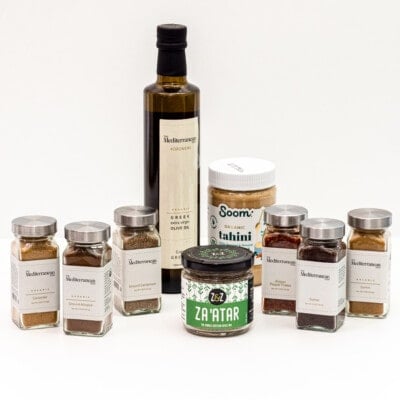

The post Chicken and Asparagus Skillet Dinner appeared first on The Mediterranean Dish.
By: Suzy KaradshehA Mediterranean diet focuses on healthy fats and protein and lots of fresh fruit, vegetables, whole grains. A Mediterranean diet should contain seven to ten daily servings (or more) of vegetables and three to four 3-ounce servings (or less) of lean proteins such as chicken and fish. Healthy fats like olive oil and nuts are also encouraged in moderate amounts. To ensure a balanced diet, aim for three portions of whole grains each day, such as quinoa or barley.
Limiting foods that can be harmful when consumed regularly is crucial. This includes all processed foods, sugar, unhealthy oils, starches, sweetened drinks like soda or juices, and red meats that contain saturated fats or nitrates. Consuming dairy should be limited. Those who do choose to include dairy should consume low-fat versions whenever possible. You should limit the number of fish you eat to three per week. Mercury contamination can cause nutritional problems and may even lead to problems with your health.
You can get the most out of your Mediterranean diet by planning meals. Make sure to pay attention to what ingredients are included in the dishes you choose.
Mediterranean food is delicious and rich in nutrients. It can be a fun way to eat. For the best health, choose high-quality proteins like wild-caught fish and grass-fed meats, as well as organic eggs, to ensure you are eating healthy meals. Additionally, incorporate heart-healthy fats from nuts, olives, avocados, extra virgin olive oil, and coconut oil. Include plenty of fresh and/or freeze fruits and vegetables, whole grains like quinoa and barley in your meals, as well as whole grains such oats, quinoa and barley. Avoid unhealthy fats, added salt, processed foods and starches as well as red meat and processed meats.
Yes, the Mediterranean Diet can be adapted to be gluten-free. It is possible to incorporate gluten-free grains into your meals, instead of whole-grain carbohydrates such as barley or wheat. Additional gluten-free options include fruits like melon, pears and fresh vegetables as well as legumes, nuts, seeds and nuts. Individuals who are allergic to dairy and milk may find it beneficial to choose lactose-free options for protein. Other ideas include making porridge for breakfast instead of oatmeal, baking salmon with potatoes, bean soup, or roasting vegetables with herbs.
The first step to a Mediterranean diet is to stock your kitchen with fresh food, such as fruits and vegetable. This could include preparing various vegetables and proteins every week that can be used in recipes throughout the following days. Whole grains like quinoa or oat grattas and millet make great substitutes for refined grain. Healthy fats such as olive and sesame should also be included in meal prep to add flavor and nutrition to dishes. Garlic, oregano basil, garlic, and turmeric all make great additions for meals.
The Mediterranean diet is typically inexpensive and has easily available ingredients. Many staple foods can easily be found at your local farmer's market or grocery store. Shopping for organic products, premium proteins or specialty items like extra virgin olive oil, can prove more costly. Plan your meals and budget accordingly. Additionally, using leftovers from previous meals and bulk-freezing food items like fish and grains will help save money over time.
A Mediterranean diet consists of fruits, vegetables, whole grain, legumes and nuts. There are also small amounts of red meat and lean poultry about once a week. Dairy products such as low-fat yogurt or cheese are also included. Fresh ingredients are preferred to pre-packaged processed food. You should use herbs instead of salt when flavoring meals. For the best results of this diet, you should include some physical activity into your daily routine. This diet is more enjoyable when you are able to share mindful eating techniques and food sharing with friends and family.
Rice is both allowed and encouraged on the Mediterranean diet. This dietary pattern emphasizes fruits, vegetables, whole grains, legumes, healthy fats such as olive oil and nuts, and a moderate intake of dairy products, fish, meat, and poultry. Whole-grain, or whole-grain, rice is a good source of carbohydrates that can provide energy to the body. Moreover, it also offers a good source of dietary fiber which can help improve digestion and provide essential nutrients for health, such as B vitamins, iron, and magnesium. You can add rice to soups, stews, or salads. If you eat rice-based dishes, it's a good idea to limit added fat.
Mediterranean eating is a way to eat a lot of fruits, vegetables and legumes. It also includes healthy fats and a low intake of red meat and added sugar. It has been linked with many health benefits including better brain health. According to research, the Mediterranean Diet can slow the aging process and reduce the risk of developing dementia. It may improve mood and offer protection against oxidative stress as well.
Many aspects of the Mediterranean diet are good for brain health and can help to prevent cognitive decline. Consuming large quantities of antioxidant-rich foods like fruits and vegetables is the most important benefit. These plant foods provide essential vitamins, minerals, and nutrients for healthy neurological function. Additionally, monounsaturated fat from sources like olive oil contributes to maintaining adequate omega-3 levels in the body--a critical component in optimal brain functioning. Limiting processed carbohydrates could also improve mental clarity. It can stabilize blood glucose levels throughout your day and reduce inflammation associated chronic diseases like Alzheimer's disease or stroke.
A Mediterranean diet that includes plenty fresh fruits and vegetables, lean proteins like chicken or fish, whole grains, healthy fats like olive oil, red wine occasionally, and moderate dairy intakes like yogurt and cheese can help maintain adequate nutrition over time. It will also help with cognitive decline. A regular exercise routine at a moderate intensity is also a good way to increase your serotonin level, which helps with mental well-being. These tips combined can help increase your chances of maintaining a good mental and physical health throughout life.
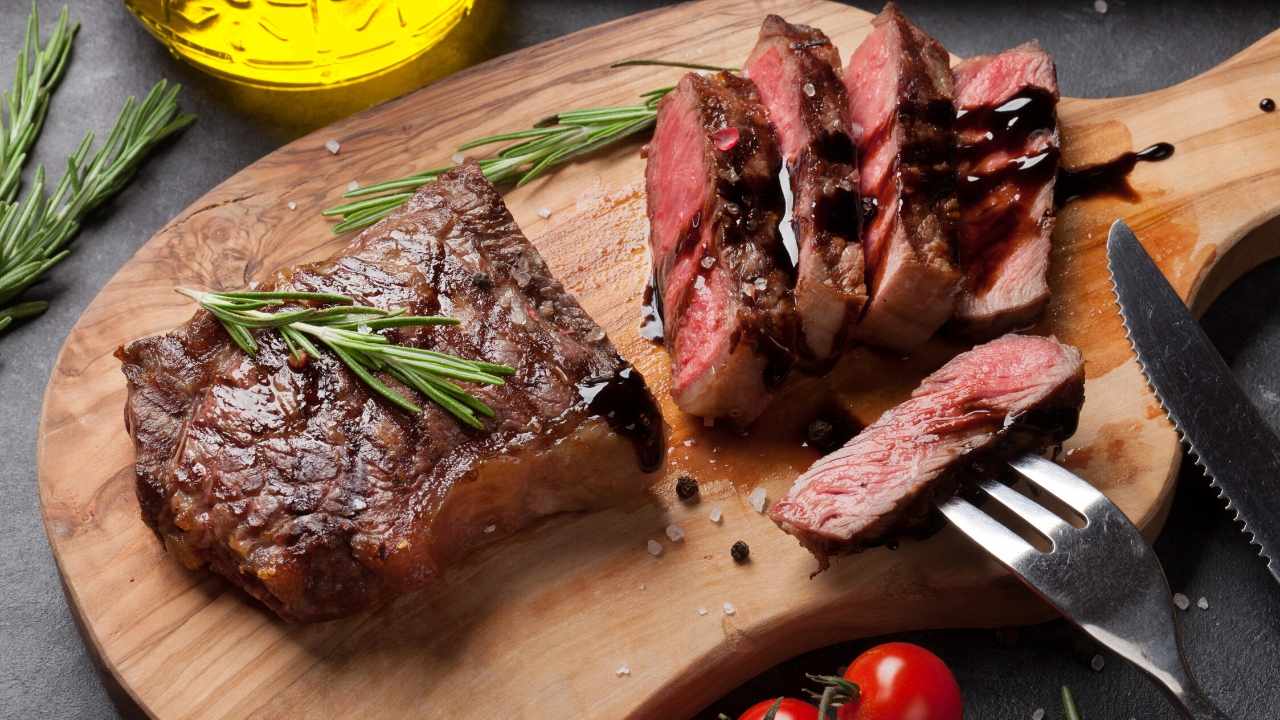 |
[TAG58]Healthline ranked the Mediterranean Diet number 1 for the following reasons: Numerous studies associate the Mediterranean diet with a reduced risk of heart |
 |
[TAG59]Psychology Today reports: Eating more green, leafy vegetables and less red meat were associated with improved cognitive functioning in a recent study of older |
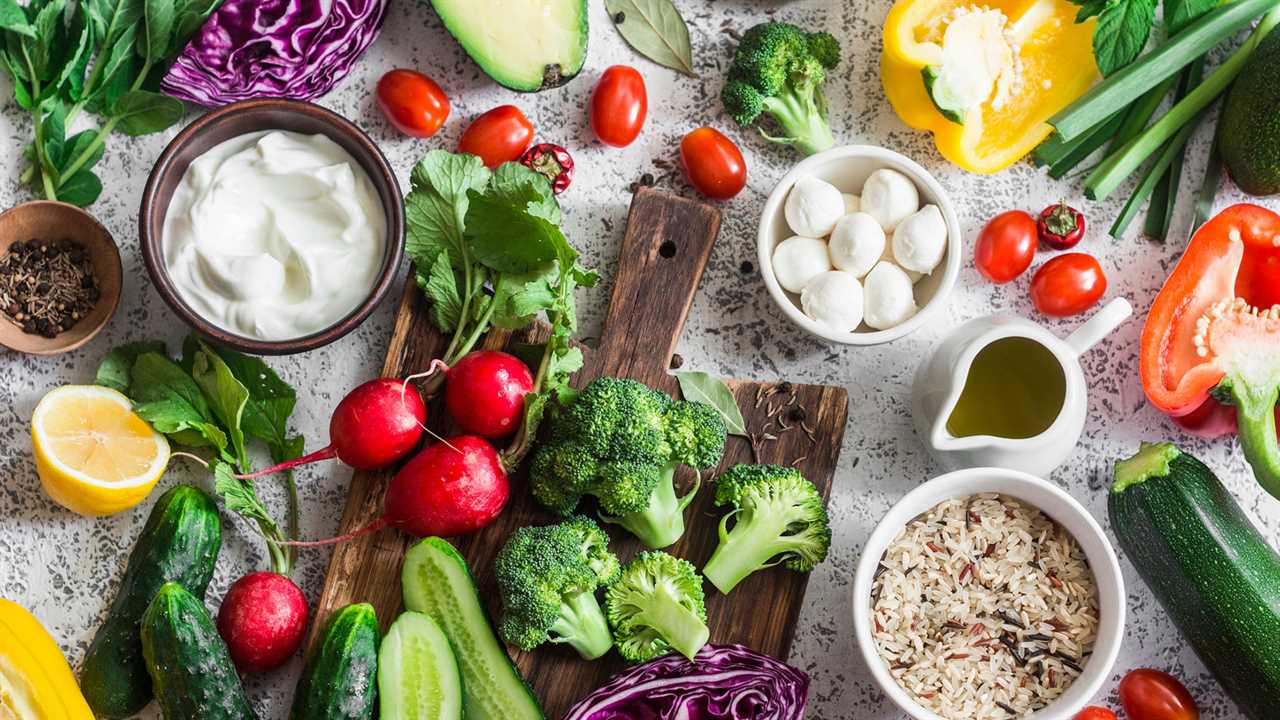 |
[TAG60]The Mediterranean diet originates in the food cultures of ancient civilizations which developed around the Mediterranean Basin and is based on the regular |
 |
[TAG61]CNBC reports that Joan Salge Blake, Boston University’s clinical professor of nutrition says: “‘Poor protein [intake] can contribute to fatigue, and that’s the |
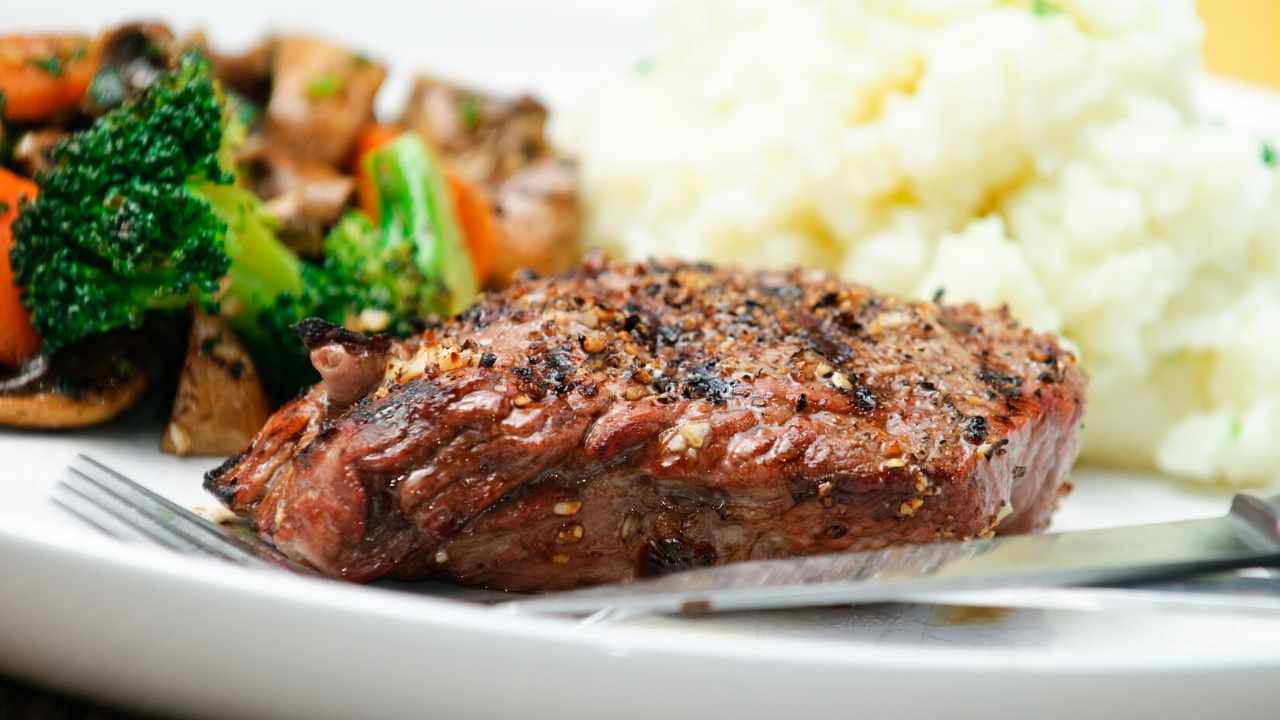 |
[TAG62]According to Olive Oil Times: The authors of the meta-study, published in Current Obesity Reports, noted that hypertension, type 2 diabetes mellitus, several |
 |
[TAG63]This review of five human studies on the Mediterranean diet examines its effects on weight loss, various diseases, and the risk of death. |
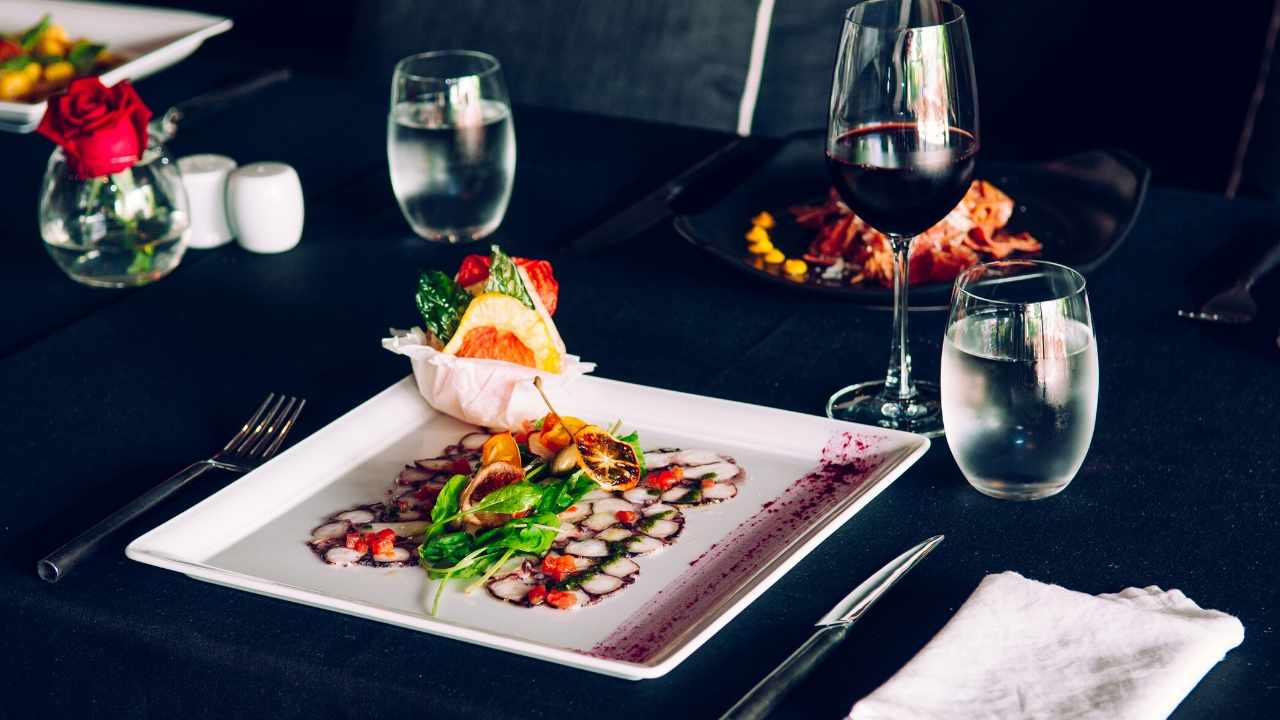 |
[TAG64]The study described in The Epoch Times found: In the conclusions of this study, the authors prefer the Mediterranean diet over the Keto diet because the key to |
 |
[TAG65]If a Google search is any indication, these are the 12 most frequently asked questions that people have about the Mediterranean diet. And if you’re interested |
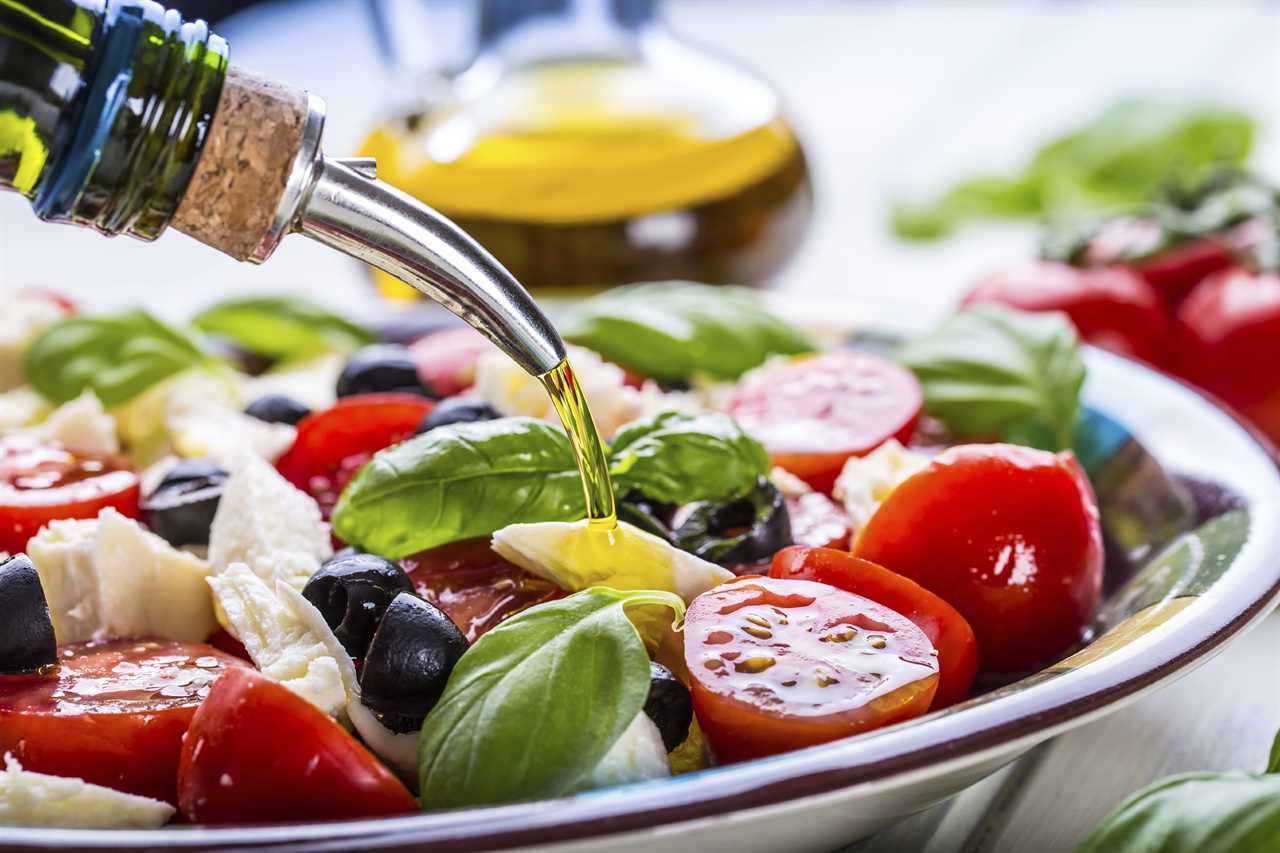 |
[TAG66]The Mediterranean diet has been linked to a number of health benefits, including reduced mortality risk and lower incidence of cardiovascular disease. |
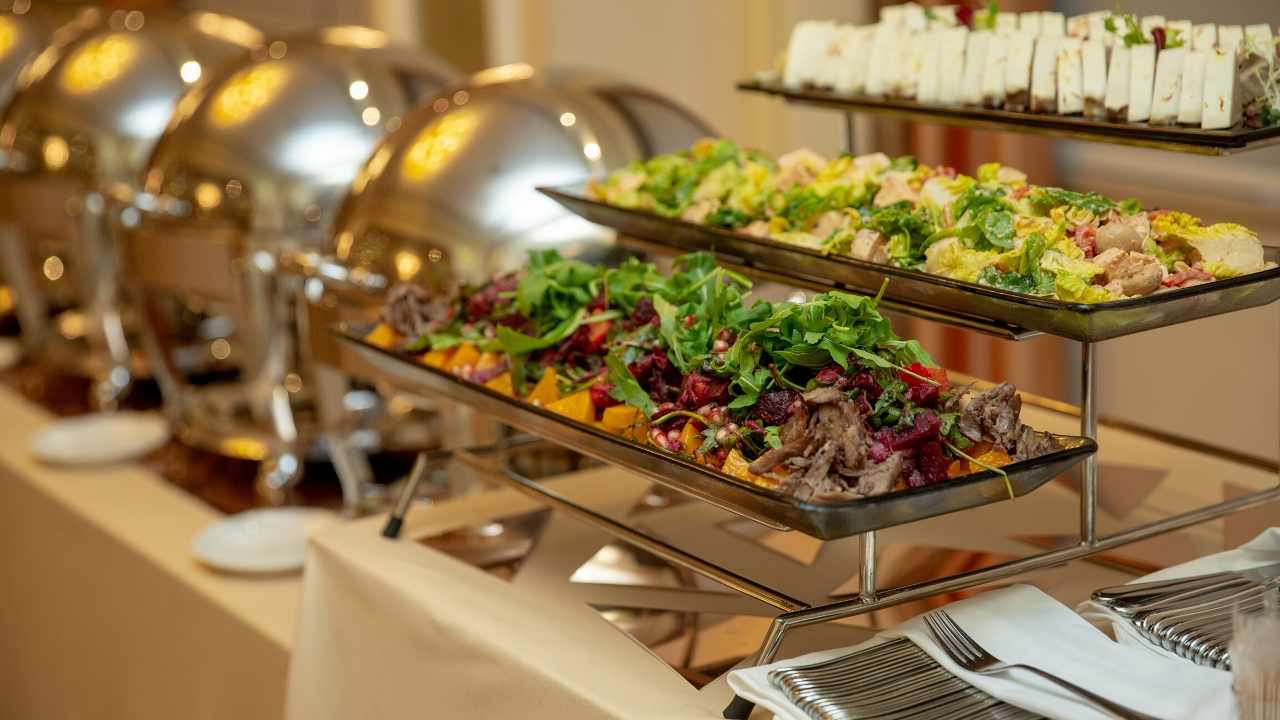 |
[TAG67]There’s new evidence that a Mediterranean diet can sharply reduce your chances of developing dementia even if you have a genetic risk for it. NBC medical |
 |
[TAG68]Chair: Dr. Alexandros Haliassos, Maria Pagoni 3:05 pm - 3:25 pm Targeting molecular therapies to lung epithelial cytosols: targeted microbial exosome |
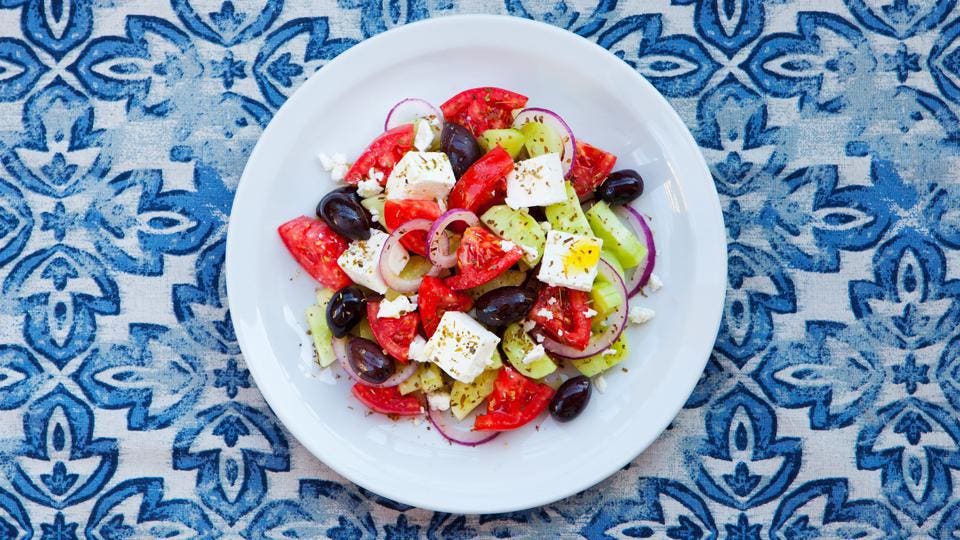 |
[TAG69]The Mediterranean diet, with its emphasis on fresh vegetables and fruit, whole grains, legumes, olive oil and fish, provides an array of health benefits, |
 |
[TAG70]💡 Want to eat the #mediterraneandiet, but are not quite sure you how?? Then you're in the right place!! ⚡️ I've got you covered ⚡️ In this video, I'll |
 |
[TAG71]In this video, we're going to explore the hidden truth about metabolic syndrome. We'll discuss the signs and symptoms of metabolic syndrome, and discuss the |
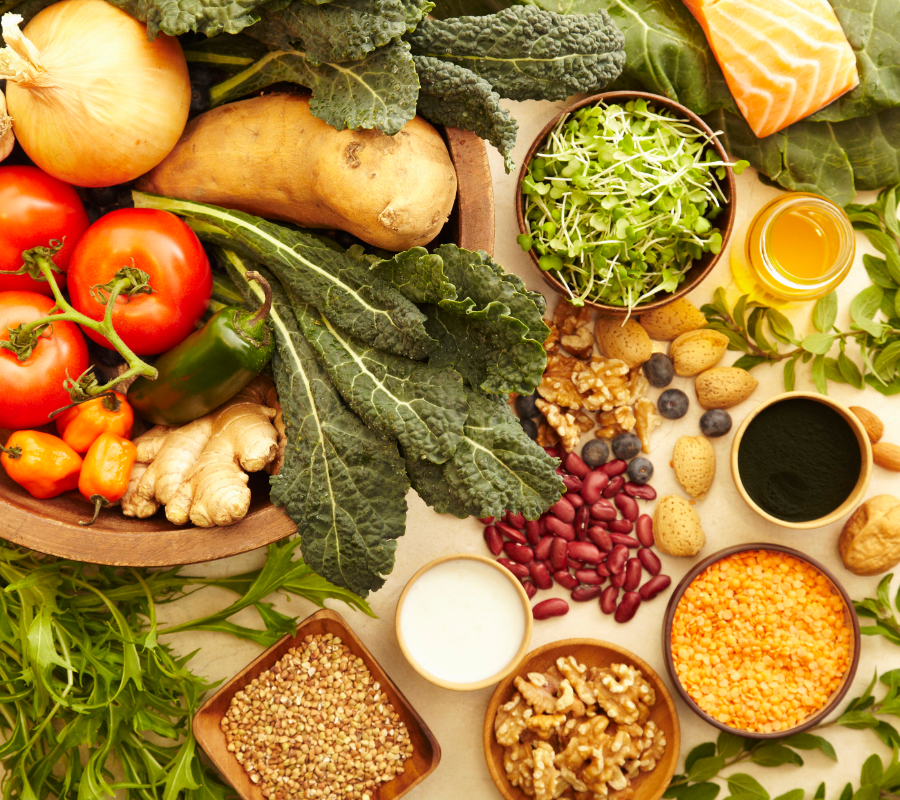 |
[TAG72]The Mediterranean diet is a heart-healthy eating plan that emphasizes healthy fats, whole grains, fruits, vegetables, beans, nuts and seeds. |
 |
[TAG73]How I was able to completely reverse my diabetes, go medication free, and how almost anyone can do the same with a blue-zone vegan lifestyle. Week 4 of my |
 |
[TAG74]Join us for a whirlwind tour of nutrition with our latest YouTube Shorts! 🌱💫 In just 60 seconds, discover the superpowers of 6 healthy seeds you should be |
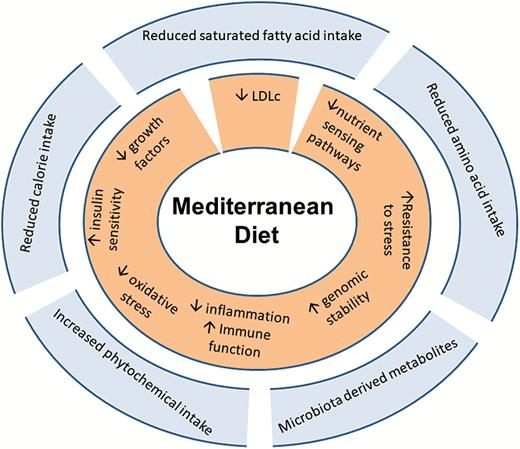 |
[TAG75]Abstract. Consuming a Mediterranean diet rich in minimally processed plant foods has been associated with a reduced risk of developing multiple chronic diseases |
 |
[TAG76]Mediterranean Diet Tips |
 |
[TAG77]My weight loss diet recipe | Healthy diet | Healthy Breakfast |
 |
[TAG78]It’s an easy (and delicious!) change that can turn your diet into a disease-fighting tool. |
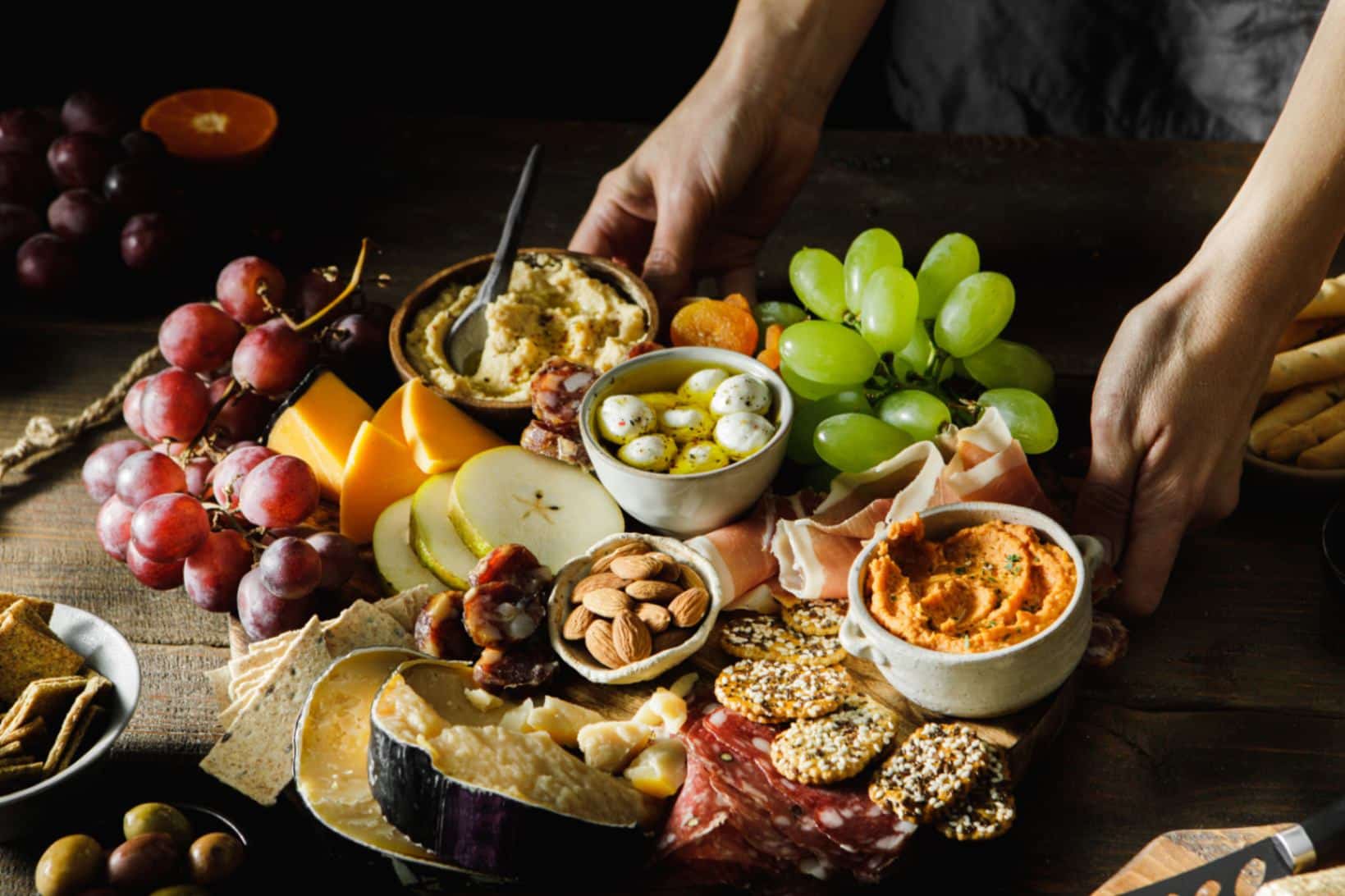 |
[TAG79]There are many misconceptions about the Mediterranean diet. Learn what it really means and how it can help you live a healthier, longer life. |
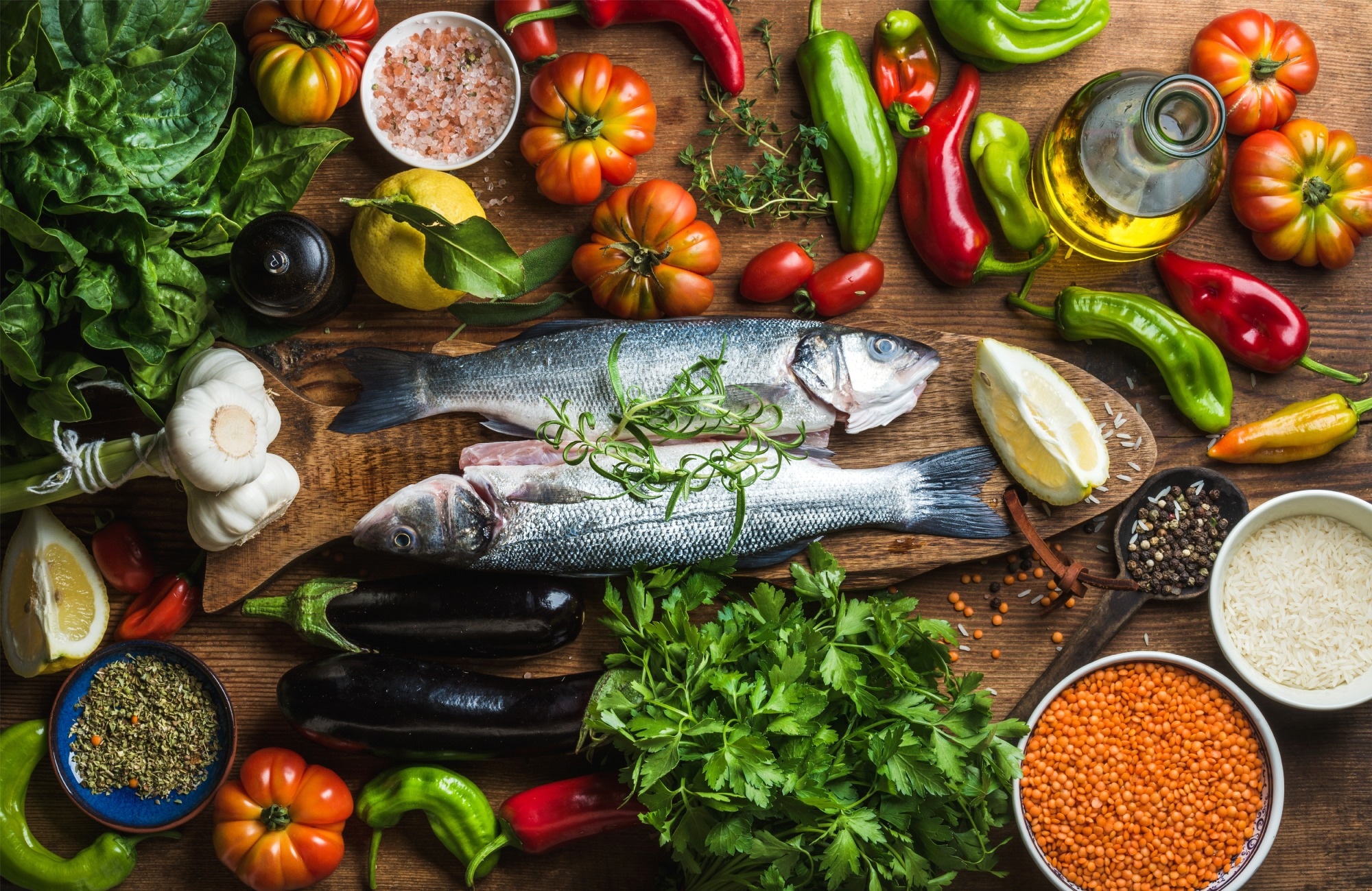 |
[TAG80]A review article published in the journal Experimental Gerontology describes the utility of Mediterranean diet (MedDiet) in the prevention and management of |
